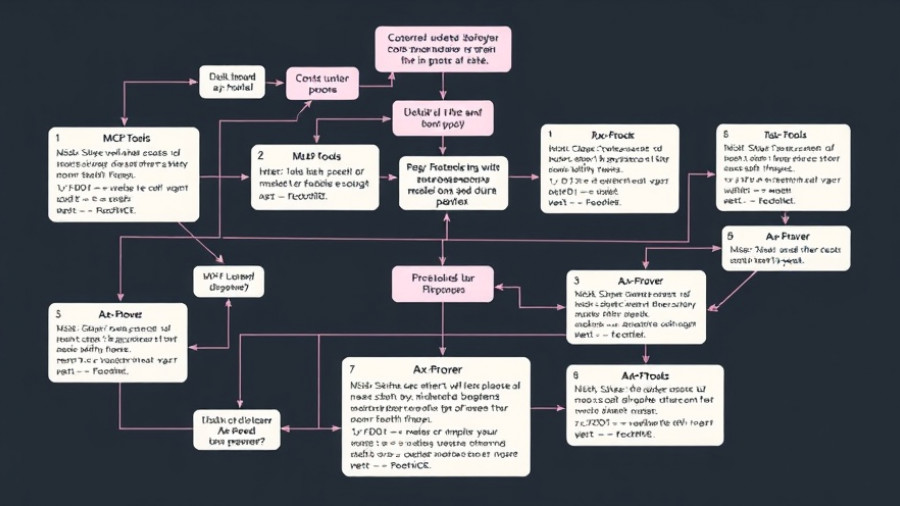
The Launch of EXAONE Deep: A Game Changer for AI Reasoning
In the rapidly evolving field of artificial intelligence, LG AI Research has made a significant leap by unveiling its self-developed reasoning AI model, EXAONE Deep, at the recent GTC 2025, hosted by Nvidia in California. This powerful model has been released as open-source, making it accessible to tech enthusiasts, developers, and researchers worldwide. With configurations ranging from 2.4 billion to 32 billion parameters, EXAONE Deep is designed to excel in reasoning tasks such as mathematics, coding, and complex problem-solving, marking a notable advancement in the quest for deep reasoning AI.
What Sets EXAONE Deep Apart?
Unlike its counterparts, the EXAONE Deep model stands out due to its sophisticated reasoning capabilities that can autonomously tackle multistep challenges. While global giants like OpenAI dominate the landscape with established models, LG AI Research emphasizes that EXAONE Deep is uniquely positioned as a competitive South Korean alternative, capable of matching or exceeding the performance of existing models. Initial evaluations have shown EXAONE Deep's 32B model scoring impressively across various benchmarks, particularly in math and coding disciplines.
A Closer Look at the Performance Metrics
The EXAONE Deep model has undergone rigorous testing, with results revealing its superiority over other comparable models. For instance, the 32B configuration scored a remarkable 95.7% on the MATH-500 benchmark, showcasing its potential as a powerful tool for both educational and technical domains. Further, its performance against proprietary models such as OpenAI’s offerings illustrates its capacity to tackle complex reasoning tasks effectively.
The Implications of Open-Sourcing AI
By releasing EXAONE Deep as an open-source project, LG AI Research is fostering an environment of collaboration and innovation. The open-source model allows developers to experiment, customize, and contribute to its development, paving the way for enhanced applications in various fields, from education to advanced computational problems. This move is indicative of a broader trend towards democratizing AI technologies, enabling more entities to leverage powerful AI without the enormous financial barriers typically associated with AI research and development.
Future Predictions and Opportunities with EXAONE Deep
As AI technologies continue to morph, the launch of EXAONE Deep suggests a future dominated by models that can not only process vast amounts of data but also reason and understand complex relationships within that data. This shift could spark innovations in agentic AI, where systems work autonomously to make decisions in real-time, thereby enhancing various applications across sectors such as finance, healthcare, and beyond. The ability of EXAONE Deep to perform at this level holds the potential to revolutionize how businesses and consumers interact with AI.
Challenges and Considerations in Using EXAONE Deep
Despite its promising capabilities, the deployment of EXAONE Deep comes with its challenges. Users must navigate potential risks, including biases that may emerge from the training data, unintended consequences of AI decision-making, and the need for ethical oversight in AI applications. LG AI Research has indicated its commitment to curbing these risks through rigorous guidelines and licensing agreements aimed at responsible usage.
In Conclusion: The Importance of EXAONE Deep
The introduction of LG's EXAONE Deep shines a light on the importance of developing sophisticated reasoning in AI models. As technology enthusiasts and professionals explore its functionalities, they'll be able to harness its capabilities to tackle pressing problems in innovative ways. Learning about deep reasoning AI has never been more crucial, as these advancements are set to shape the future of how we utilize technology for problem-solving at scale. For anyone looking to delve into the world of AI, exploring EXAONE Deep provides a valuable opportunity to understand the next generation of intelligent systems.
As the field continues to grow, staying informed about deep reasoning AI will be key for navigating the future landscape of technology. Visit LG AI Research's open-source repository to explore EXAONE Deep and engage with this groundbreaking AI technology today!
 Add Row
Add Row  Add
Add 




Write A Comment